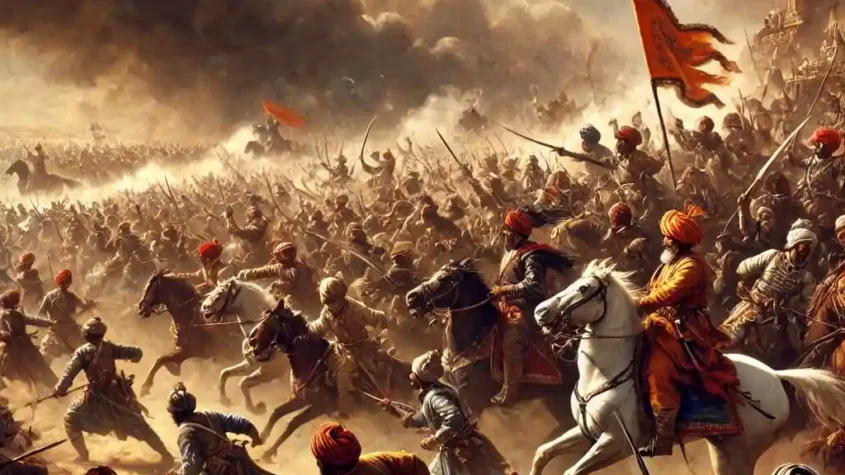
Egerp Panipat is a unique and rich topic that delves into the historical significance and cultural identity of a prominent Indian city. This site has been pivotal in various battles that shaped the subcontinent’s history, especially in the context of the Mughal Empire. The essence of Panipat lies in its ability to reflect the struggles and triumphs of nations, making it a fascinating subject for anyone interested in history.
As an intersection of strategy and culture, Egerp Panipat offers insights into the historical battles that occurred there, highlighting the importance of this city in military history. It has been the backdrop for critical moments that influenced the very fabric of India. Readers will discover how Panipat remains relevant today, blending its past with modern-day significance.
Exploring Egerp Panipat opens a window to an era of epic battles while showcasing the resilience of a city that has witnessed both defeat and victory. This exploration not only informs but also enriches the understanding of India’s diverse heritage and the lessons drawn from its past.
Historical Significance of the Battle of Panipat
The Battle of Panipat marked a crucial turning point in Indian history, significantly influencing the power dynamics of the region. Key events leading to the battle highlight the rise of new forces and the profound impact it had on the subcontinent’s future.
Background of the Maratha Empire
In the early 18th century, the Maratha Empire emerged as a dominant force in India after the decline of the Mughal Empire. Founded by Chhatrapati Shivaji Maharaj, the Marathas expanded their territory across western and central India. Their guerilla warfare tactics and administrative reforms allowed them to establish a formidable presence.
By the 1730s, the Marathas had consolidated power, becoming a threat to both regional and foreign powers. The empire’s strength drew the attention of the Durrani Empire under Ahmad Shah Durrani, leading to a series of confrontations. The struggle for dominance set the stage for the climactic battles at Panipat.
Rise of Egerp Panipat
Egerp Panipat, a significant yet less widely known figure, played a crucial role in the events leading up to the battle. As an influential general, he was central to the Maratha strategy and their military campaigns. His leadership and tactical approach effectively mobilized troops and resources.
Conflicts and rivalries within the Maratha leadership impacted decisions, creating an environment ripe for confrontation. The tensions culminated in the battle against Durrani forces in 1761, where the Marathas aimed to secure their dominance. Egerp’s contributions shaped the battle’s preliminary engagements and highlighted the internal struggles that influenced the outcome.
Impact on Subsequent History
The Battle of Panipat had far-reaching consequences for the Indian subcontinent. It resulted in devastating losses for the Maratha Empire, leading to a significant power vacuum. The defeat weakened the Marathas, allowing the British East India Company to exploit political instability and expand their control.
Following the battle, the regional geopolitical landscape shifted, altering alliances among various kingdoms. The power dynamics established in the aftermath influenced Indian politics for decades. The legacy of the battle is evident in the subsequent rise of the British colonial presence, permanently changing the trajectory of Indian history.
Egerp Panipat in Modern Context
Egerp Panipat continues to resonate in contemporary discussions. Its significance is observed through various means of commemoration and cultural references that reflect community values and historical awareness.
Commemoration and Legacy
Egerp Panipat is marked by numerous events and memorials. Annual commemorative events take place in academic and cultural circles, highlighting its historical importance. Educational institutions often include discussions about Egerp Panipat in their syllabi, promoting awareness among younger generations.
Monuments and memorials serve as physical representations of its legacy. These sites attract historians and tourists alike, fostering a deeper appreciation for the events that transpired. Documentaries and literature also contribute to understanding Egerp Panipat’s role in shaping societal dynamics.
Cultural References
The influence of Egerp Panipat extends into various forms of media. Films, television shows, and literature reference its events, showcasing the impact it had on society. Such adaptations often dramatize themes of courage, sacrifice, and strategy, embodying the values attributed to this historical moment.
Artistic expressions, including paintings and performances, draw inspiration from the historical context of Egerp Panipat. These works enable audiences to engage with the past and reflect on its relevance today, ensuring that the memory of Egerp Panipat endures within cultural narratives.
Gold Belt Buckle: A Timeless Accessory for Every Occasion
The gold belt buckle has long been a symbol of status, craftsmanship, and personal style. …










